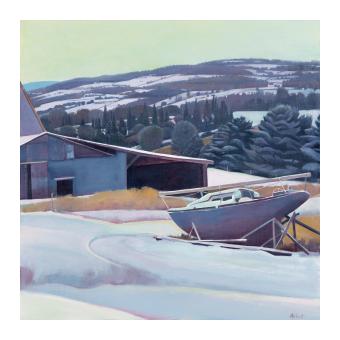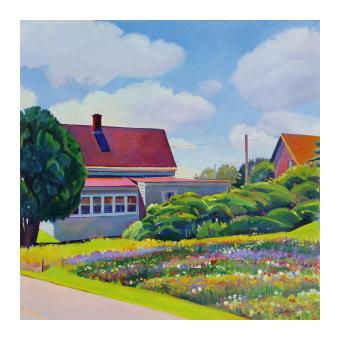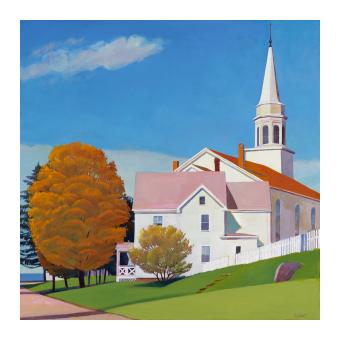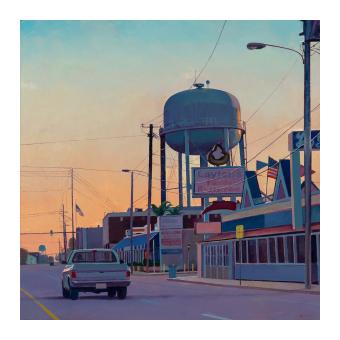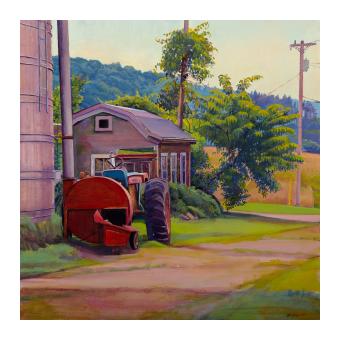I moved to Vermont almost twenty years ago for the most impractical of reasons, love at first sight. Driving through a small town in the southern part of the state, in the early morning, on my way to somewhere else, I caught a glimpse of a stream running through the backyard of an old clapboard cape. Suddenly I was back in my childhood, in a time before the creeks in my own town were culverted and the yards subdivided. The Vermont I saw from a car window looked like a memory of home, and I was hooked. Two decades later, I’m still attracted to what I see here and on my frequent travels to down east Maine: a work-a-day patchwork of small towns, dirt roads, village greens, barn yards and back fields. Looking carefully at these ordinary places, landscape and memory intersect for me. While I paint, the abstraction of color, light, and shape combine with subject to compose a mood and a meaning. In these landscapes, the mood may be melancholy, the meaning ambiguous. Both mood and meaning in my landscapes—images of old houses, old farms, old towns, old trucks–have to do with age and time. Like many Vermonters, I value the old. Even when a barn has outlived its purpose, we respect its venerable presence and want to see it endure. The Japanese concept of “wabi-sabi” has helped me understand why I find these old, ordinary, and sometimes broken-down places so beautiful. Wabi-sabi embraces the aged, the imperfect, the modest, the subjective, the natural, the seasonal, the private, the mysterious. In Vermont and Maine, I find wabi-sabi everywhere I look. In my painting, I find beauty in the ordinary, and try to hold on to the changing, the disappearing, the memory, and the first glimpse.
